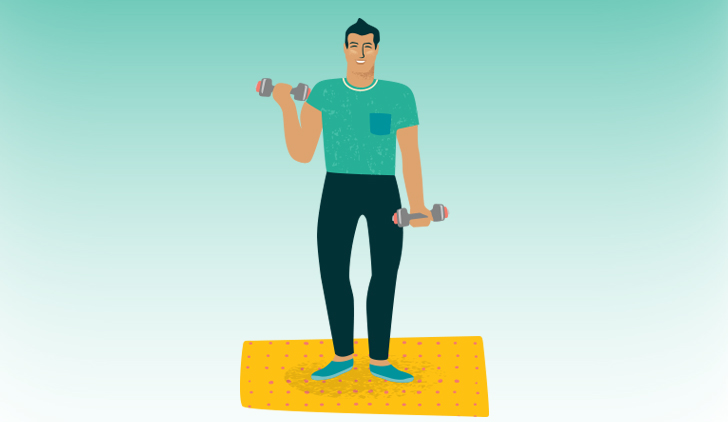
Add a few pounds to your exercise routine to help shed a few.
Build it
Strength training helps build muscle, and muscle helps raise your metabolism. That means you’re burning more calories even when you’re not actively exercising. So, grab those weights and start lifting!
- Work the major muscle groups in your legs, abs, back and core two or three times per week. Start with one set of eight to 12 repetitions for each movement and build to two or three sets.
- Begin with lighter weights to help build stability. This will also help you control your movements while you learn the correct way to train.
- Focus on proper form to reduce your chance of injury. Keep your knees over your toes, back straight and shoulders down, abs tight, and ears over your shoulders.
- Breathe! Don’t hold your breath. Exhale when you lift, inhale when you lower.
- Add more weight as you get stronger. The muscle you’re working should feel tired by the last two repetitions, but you should also be able to maintain good form.
If you’re new to strength training, joining a gym and working with their trainer is a good place to start. (Be sure to check with your doctor before you begin.) And don’t worry about how you might look to other people. Everyone is a beginner at some point, and most people at the gym are too busy paying attention to their own workout to see any mistakes you think you’re making.
Lose it
The method for losing weight is simple: eat fewer calories than you burn. So, you need to reduce your calorie intake or increase your physical activity. Doing both will get the scale moving in the right direction. And adding metabolism-boosting strength training can help even more.
Weight for more
Not looking to lose weight? Regular strength training also can
- increase bone density and help reduce the risk of osteoporosis and fractures
- reduce the symptoms of arthritis, back pain and other chronic conditions and
- contribute to better balance, which may reduce the risk of falls.
Sources: acefitness.org, clevelandclinic.org, health.harvard.edu, livestrong.com, mayoclinic.org, WebMD.com
![]()


